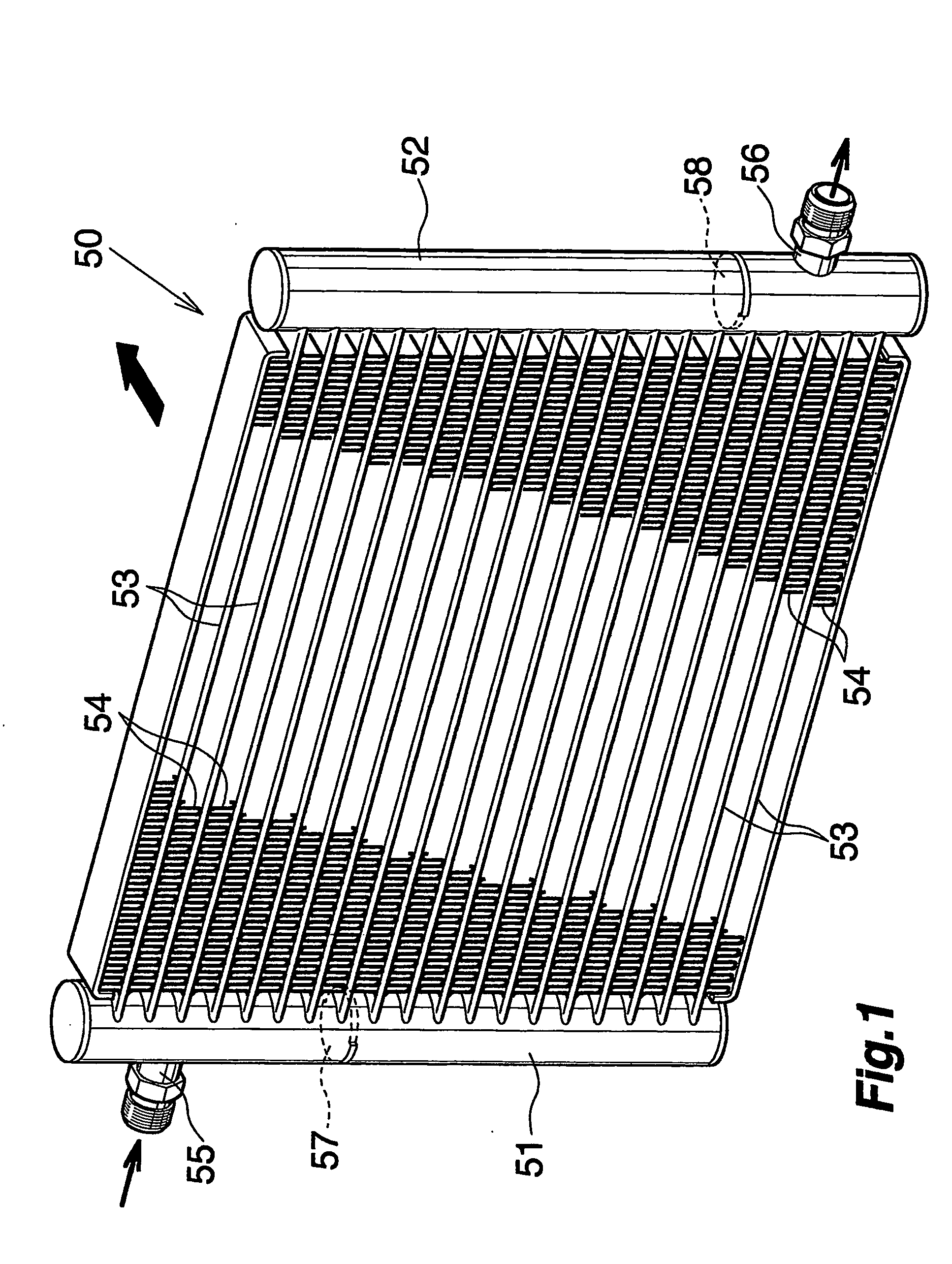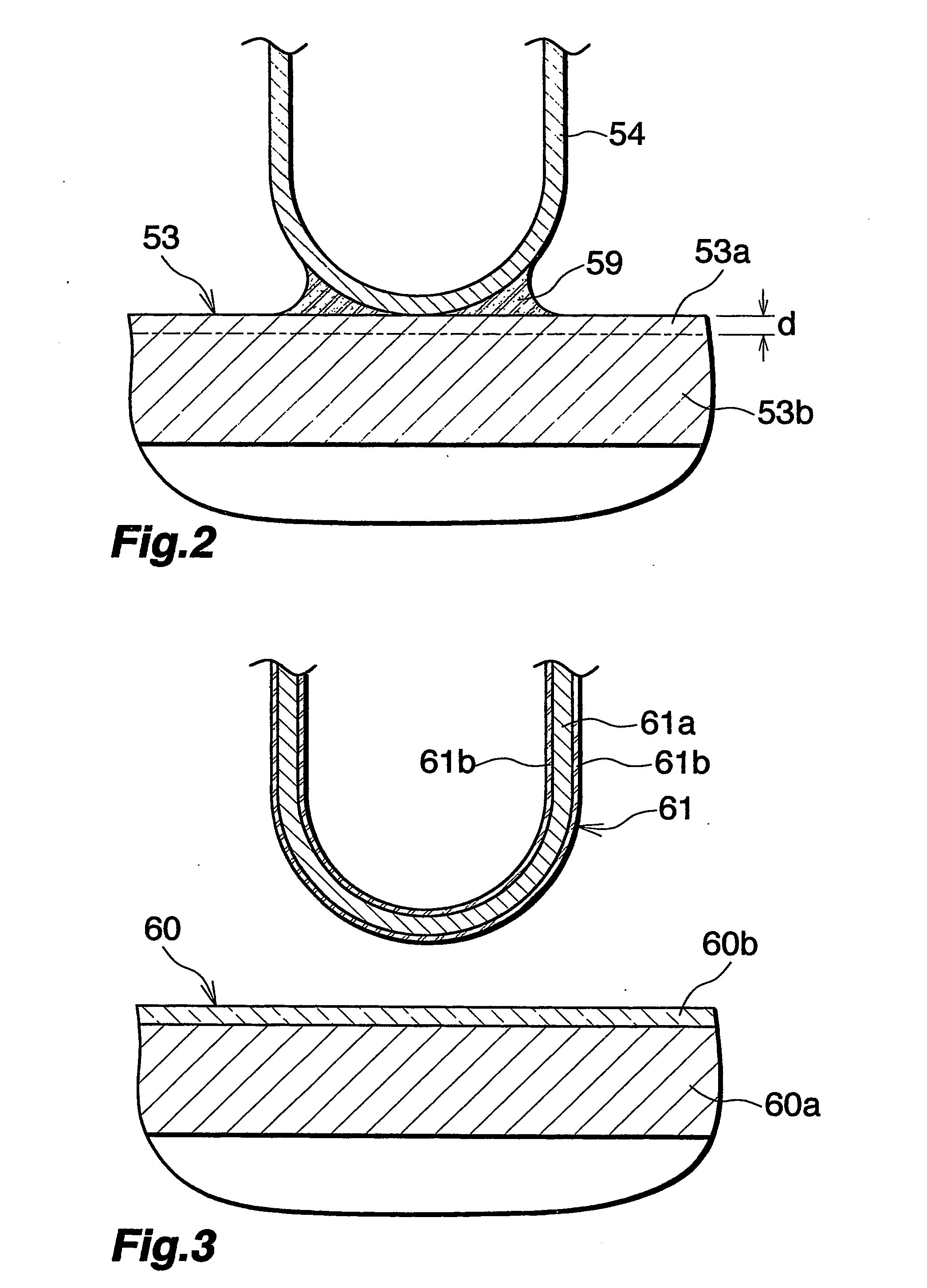Heat exchanger, heat exchanger tube member, heat exchanger fin member and process for fabricating the heat exchanger
a heat exchanger and fin technology, applied in the field of heat exchanges, can solve the problem of low heat exchange efficiency
- Summary
- Abstract
- Description
- Claims
- Application Information
AI Technical Summary
Benefits of technology
Problems solved by technology
Method used
Image
Examples
example 1
[0056] Refrigerant tube members 60 were produced each by extruding an alloy having the composition shown in Table 1 into a tubular main body 60a and forming a Zn spray layer 60b in an amount of 4 g / m2 over the entire outer peripheral surface of the main body 60a. Also produced were corrugated fin members 61 each comprising a core 61a and a cladding 61b covering each of opposite surfaces of the core 61a, the core and the cladding having the respective compositions shown in Table 2. In the corrugated fin member 61, the cladding ratio of the cladding 61b on one surface of the core 61a was 10%. Also prepared were suitable header members.
TABLE 1Exam-Composition (mass %)pleAlCuMnSiFeMgCrZnTiEx. 1Bal.0.490.290.060.150.010.010.01Comp.Bal.0.150.020.100.210.010.01Ex. 1Comp.Bal.0.400.190.050.170.010.010.010.01Ex. 2
[0057]
TABLE 2Composition (mass %)AlSiFeCuMnMgZnTiExam-CoreBal.0.350.171.21.1ple 1Clad-Bal.8.80.160.30.10.02dingComp.CoreBal.0.350.201.21.2Ex. 1Clad-Bal.8.90.201.2dingComp.CoreBal.0...
PUM
| Property | Measurement | Unit |
|---|---|---|
| pH | aaaaa | aaaaa |
| depth | aaaaa | aaaaa |
| length | aaaaa | aaaaa |
Abstract
Description
Claims
Application Information
 Login to View More
Login to View More - R&D
- Intellectual Property
- Life Sciences
- Materials
- Tech Scout
- Unparalleled Data Quality
- Higher Quality Content
- 60% Fewer Hallucinations
Browse by: Latest US Patents, China's latest patents, Technical Efficacy Thesaurus, Application Domain, Technology Topic, Popular Technical Reports.
© 2025 PatSnap. All rights reserved.Legal|Privacy policy|Modern Slavery Act Transparency Statement|Sitemap|About US| Contact US: help@patsnap.com



